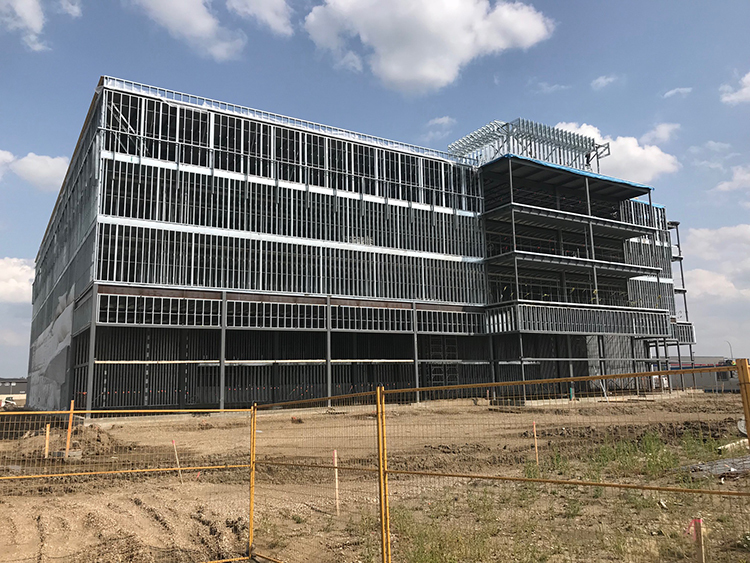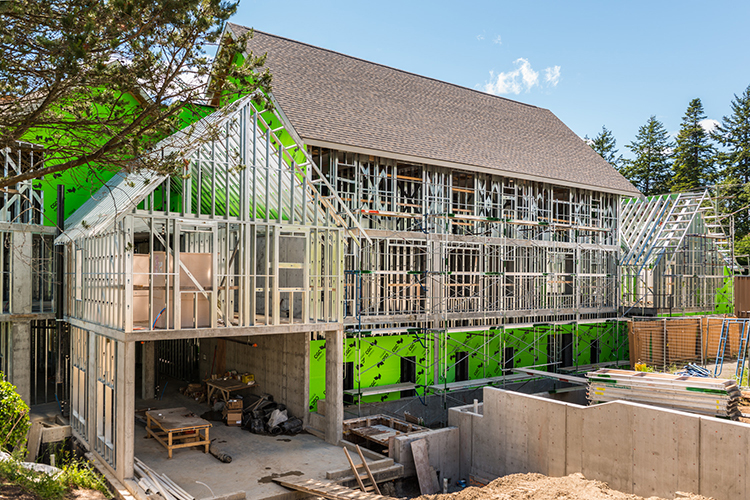Article: Builders Turn to Steel Framing as UK Aims to Reduce Wood Building Heights

England intends to reduce the maximum height allowance of wood-framed buildings from six to three or four stories, according to The Construction Specifier. By making the change, officials in the United Kingdom hope to avoid another catastrophe like the 2017 Grenfell Tower fire, which resulted in 72 deaths.
The 24-story Grenfell Tower was a concrete slab structure, a standard for London housing blocks in the early 1970s when it was built. The 2017 fire was caused by the building’s cladding, the external insulation, and the air gap in between, notes The Construction Specifier.
Emergency services in the UK has suggested reducing wood-framed building heights to reduce fire risk.
Throughout the world, many builders are turning to cold-formed steel (CFS) framing for low and mid-rise projects. Steel can’t burn, because it contains no elements that can serve as fuel. It provides no means for a fire to start, and it does not contribute to fire growth or fire spread. Also, steel does not contribute to the generation of smoke and toxic combustion products in fires.

Building codes recognize steel framing as non-combustible construction. The codes make CFS eligible for use in Type I buildings, which have the most stringent fire-resistance requirements. CFS framing is also common in Type II buildings, which are required (with few exceptions) to be built of non-combustible materials.
Buildings of non-combustible construction Types I and II are permitted to have larger areas and heights compared to buildings of combustible construction types, because non-combustible construction contributes to reduced risks of fire ignition, fire growth, and fire spread.
The construction of mid-rise wood frame buildings continues, despite the risks of fire. Unfortunately, the number of devastating fires is growing.
“The move to relax building codes and permit wood framing at heights above the typical four-story limits has been driven by the relentless pursuit of cheaper construction methods and materials,” says Larry Williams, Steel Framing Industry Association.

Changes in building codes in the United States, for example, increased the allowable heights of wood the Association of the Wall and Ceiling Industry.
A follow-up revision allowed for fire walls made with combustible materials like wood in Type V buildings, so long as sprinklers were installed and the fire-resistant gypsum board was applied to the framing member. Prior to this change, fire walls had to be made using non-combustible steel or fire-resistive concrete.
A third change involved a new and broader definition of what constitutes a fire wall. The 2006 codes no longer considered a fire wall to be the separation of fire areas within a building. The codes allowed for the division of the structure into separate buildings, each subject to its own height and area limits.
Together, the revisions have enabled the proliferation of large multifamily and retail projects, up to 70 feet in height, built with combustible wood framing over a one- or two-story podium of noncombustible steel or concrete.
“These code changes have had the predictable and, unfortunately, sad results of more and more devastating fires,” Williams says. “It’s good to see the UK taking the lead in planning to make buildings safer.”